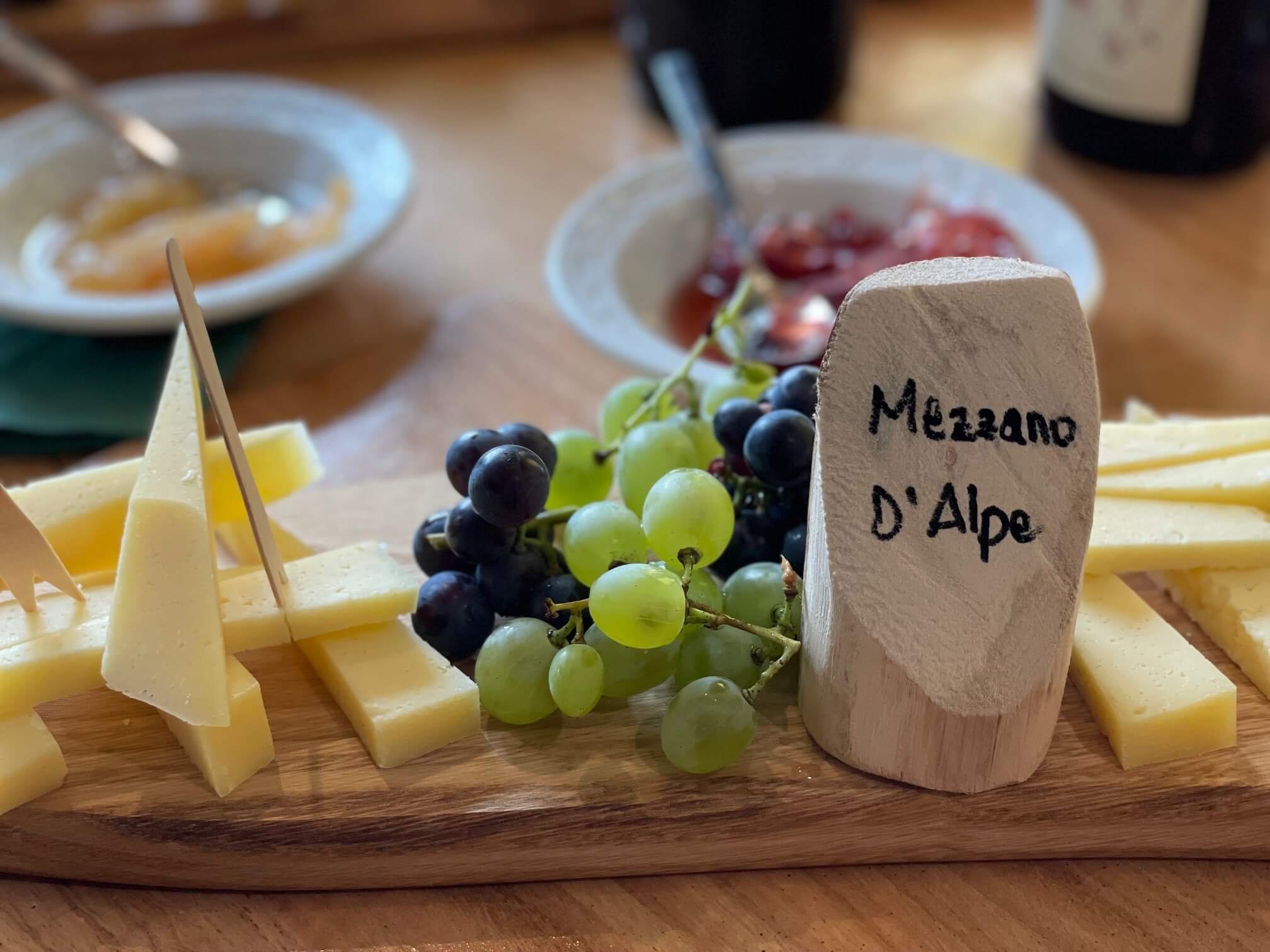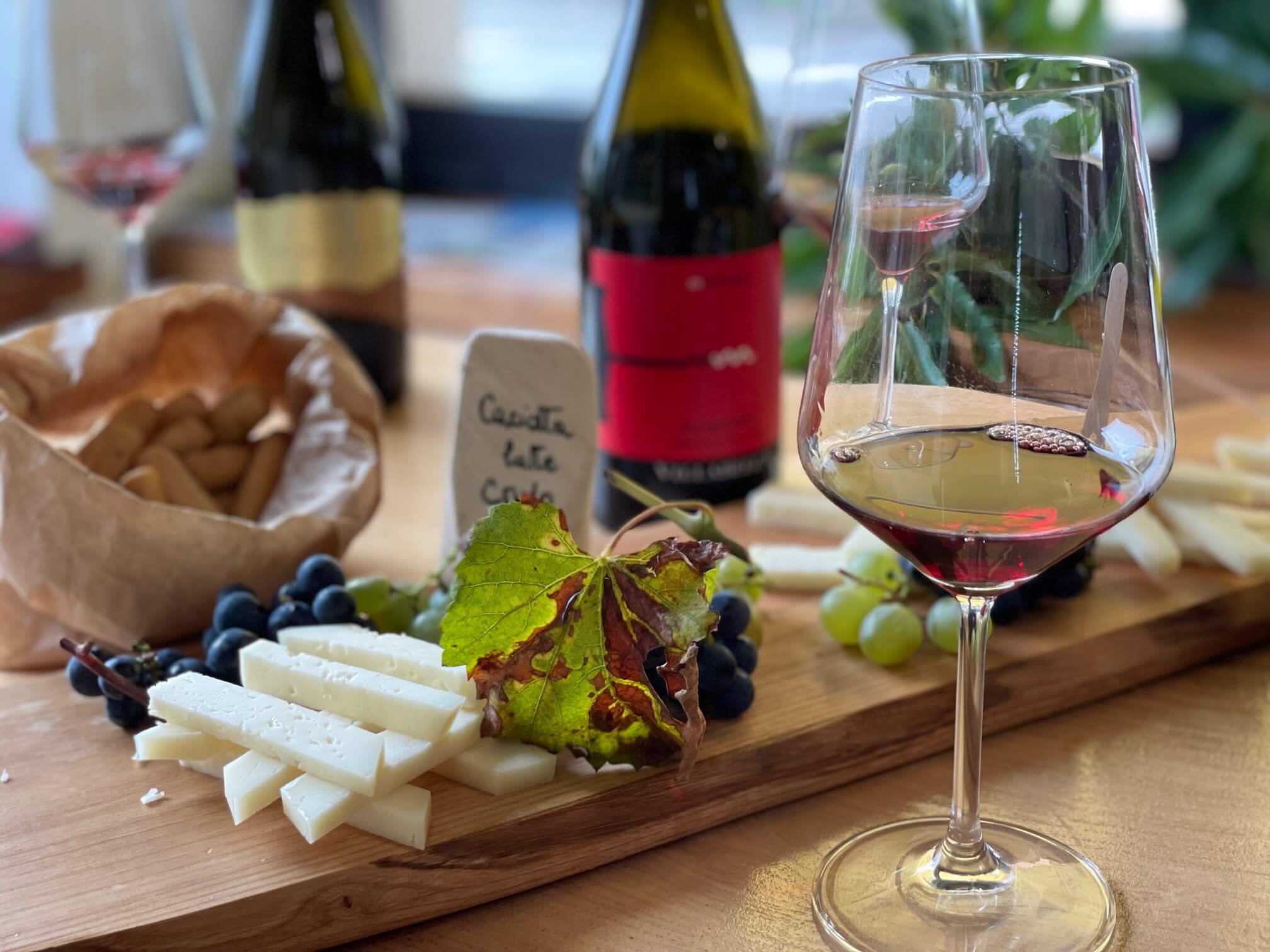Discover the Outstanding Cheese & Wine of Monte Baldo, on the Shores of Lake Garda
The region of Monte Baldo, named for the highest peak on the east side of Lake Garda, is one of Italy’s most popular destinations for hiking, mountain biking, and scenic lake views. In addition to tourism, Monte Baldo produces Bardolino wines from the nearby foothills as well as alpine cheeses. Paired together, or appreciated separately, both the cheeses and the wine are worthy of a closer look.
The Monte Baldo Region
Lake Garda, located midway between Venice and Milan, is Italy’s largest lake and was formed by alpine glaciers over 1,000,000 years ago. Overlooking the lake, Monte Baldo, a mountain range between the provinces of Trento and Verona is often referred to as the garden of Europe due to the diversity of flora that grows there. Vine cultivation in the area dates to the Middle Ages when local monasteries learned the art of winemaking from the Roman tradition.
Cheeses Of Monte Baldo, San Zeno
While you may have difficulty finding them outside the region, the local alpine cheeses are well worth seeking out when you are there. Producers are often small but can be found at local shops such as La Casara del Baldo, owned by the Campagnari brothers. Though the shop is new, the family has a long history of raising cows and making cheese and still own and manage every aspect of the production—from managing the herd to making and selling the cheese.
Caciotta Latte Crudo
Caciotta Latte Crudo
Caciotta Latte Crudo is a raw milk, semi-soft texture cheese (crudo means raw in Italian) that is aged between 60 and 90 days. The cows graze on the highest peaks of Monte Baldo from mid-May until the 20th of September. In September they are herded to lower elevations where they are fed the hay cultivated in fields owned by the Campagnari family.
Proprietor Giovanni Campagnari explains that making cheese with raw milk helps retain the flavors and aromas of the grasses and herbs the cows feed upon in the summer.
Mezzano D'Alpe
Mezzano D'Alpe
Mezzano D'Alpe is a raw milk cheese that is made only in the summer when the animals are grazing on the highest peaks of Monte Baldo. It is aged between 6 and 10 months. The cheese is characterized by a soft texture but with intense flavors, the result of grazing on sweet fresh grasses on the mountain. The flavors are concentrated by 6 months of maturation.
Stagionato BaldoMont
Stagionato BaldoMont
Stagionato BaldoMont is a blend of skim milk and whole milk. The milk from the evening milking is skimmed and left to separate then mixed with the whole milk from the next morning's milking. The two kinds of milk get mixed together to become the Stagionato. Even though it is aged between 12 and 15 months it nevertheless has a light flavor and texture and is slightly spicy.
Riserva 24 Months
Riserva 24 Months is a full-fat cheese, aged for a minimum of 24 months. Whey is added from the previous day's milking instead of using rennet to arrive at a pH of 5, which is when the milk will start to curdle. The Riserva is aged in the humid environment of a tunnel that was built in the mountain during WWI. The flavor is sweet and lightly buttery making it an excellent cheese to grate over other dishes like pasta.
Bardolino Wine
Named for the town of Bardolino, on the shores of Lake Garda, Bardolino wines are generally fresh and fruity with some characteristic spicy notes, which can taste like cinnamon, clove, nutmeg, or black pepper. It’s easy to understand why the light wines with a savory and spicy profile pair well with the local cheeses.
The primary grape varieties used in Bardolino include Corvina and Rondinella, both native to the area. According to the rules of the DOC, a blend of a maximum of 95% Corvina; a minimum of 5% Rondinella, and a maximum of 40% must be used. Other grapes are allowed to be cultivated in the area but only for a maximum of 20% and with a 10% limit for each variety. After the crus were abandoned in 1968, Bardolino became amongst the first Italian DOC. With the 2018 vintage 3 subzones of the Bardolino appellation were approved — La Rocca, Montebaldo, and Sommacampagna.
Montebaldo Bardolino Cru Wines to Pair with La Casara Del Baldo Cheese
Montebaldo Bardolino Eocene 2020 Bigagnoli
The Eocene Bardolino 2020 is allowed seven days of skin contact and then four months of battonage and aging in stainless steel. It is light in color, fruity, and easy to drink. Try this cheese with Caciotta, a younger cheese.
Montebaldo Bardolino Morlongo 2020 Vigneti Villabella
Morlongo sees a bit of skin contact during fermentation then is aged in large oak casks and bottled where it is further aged. This wine is more spice and cherry with also a bit of ginger, black pepper, and clove. Great with all of the cheeses, but especially the Mezzuna d’ Alpe and the Riserva.
Montebaldo Bardolino Bol Grande La Fraghe 2020 organic wine
The Bol Grande is a little fuller bodied than a typical Bardolino wine and due to the Corvina grape, has notes of sour cherry and blueberry, cinnamon, and black pepper. It is aged for one year in concrete. Because of longer aging and more intense flavors it also pairs well with the stronger flavored caciotta.
Montebaldo Bardolino San Verolo Gentili 2020
This wine is aged primarily in steel tanks but does see a touch of oak in the form of very large barrels. This process brings forward the red fruit flavors of strawberry and raspberry plus some spices like cinnamon and nutmeg. A pale red color, this wine is easy to drink. The touch of oak adds some complexity to match with the more aged cheeses like the Stagionato and the Riserva.
However, you enjoy the cheeses and wine, a trip to Lake Garda should definitely include both! Head to VisitGarda for more information.









